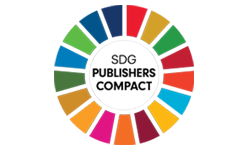Information technology (IT) plays an important role in development of business, boosting economic growth and employment by energising higher education sector. Software sector is a major component of IT industry. Development of indigenous software products is necessary for nation’s economy through development in software industry. Under ‘Digital India’ and ‘Make In India programmes major institutions are involved in policies and initiative programmes, R&D and innovation for growth of software industry. The paper attempts to highlight the crucial contribution of key stakeholders such as universities, technical research institute and private-public software firms, STPI and industrial association for development of software products and services. The Indian Government has taken many initiatives for promotion and adoption of Free & Open Source Software for increasing foreign exchanges, developing indigenous products and achieving vendor’s independence. The paper raise question about unavailability of indigenous software products as compared to Microsoft and other foreign vendor’s products in Indian market. Various institutions are still working on creation of indigenous software and in upcoming time novel products and technologies will be provided by India to domestic and global IT market.
AICTE.(2015). Statistics.All India Council for Technical Education, New Delhi. Retrieved on Dec 2015 from http://www.aicte-india.org/sallstatewisehtm.php
AICTE.(2016). Aicte approved institutes for the academic year: 2015-2016. All India Council for Technical Education, New Delhi. Retrieved on Dec 2016 from http://www.aicte-india. org/dashboard/pages/dashboardaicte.php
Athreye, S.S. (2005).The Indiansoftware industry and its evolving service capability. Industrial and corporate change. Oxford University Press, 1-26. https://dx.doi.org/10.1093/icc/dth056
Bhattacharjee, S., &Chakrabarti, D. (2015). Investigating India’s competitive edge in the IT-ITeS sector. IIMB Management Review, 27, 19-34. https://dx.doi.org/10.1016/j. iimb.2015.01.003
Bhatnagar, S. (2006). Indian software industry. Technology, Adaption and exports: How some developing countries got it right.In V. Chandra (Eds.), World Bank, 95-124.
Buyya,R.,Vecchiola,V., & Selvi,S,T .(2013). Mastering cloud computing foundations and applications programming. Elsevier
Chadha, V., Sachdeva, H., &Choudhary, P. (2015). Incongruity between the generations: Requirement and employment of technical workforce in India’s ICT sector. Man &Devalopment, 37(3). https://Journal of Technology Management for Growing Economies, Volume 8, Number 2, October 2017
Deity.gov.(2015). Major foss initiatives.Department of Electronics & Information Technology, New Delhi.Retrieved on Nov 2015 from http://deity.gov.in/ content/major-foss-initiatives
Deity.(2015). Performance contribution towards exports-it-ites industry.Department of Electronics & Information Technology, New Delhi. Retrieved on Nov, 2015 from http://deity. gov.in/content/performance-contribution-towards-exports-it-ites-industry
Deity. (2017). Performance & Contribution towards Exports by IT-ITES Industry. Department of Electronics & Information Technology, New Delhi. Retrieved on June, 2017 from http://meity.gov.in/content/performance-contribution-towards-exports-it-ites-industry
Engelhardt, S.V. (2008). The Economic Properties of Software.Jena Economic Research Papers, 45, 1-24. http://dx.doi.org/10.2139/ssrn.1430885.
Fagerberg, J. (2005). Innovation: A guide to the literature. In J. Fagerberg, D.C. Mowery, & R.R. Nelson (Eds.), The Oxford handbook of innovation (pp.1-27). New York: Oxford University Press. http://dx.doi.org/10.1093/oxfordhb/9780199286805.003.0001.
Freeman, C. (1987). Technology Policy and Economical Performance: Lessons from Japan. Printer Publishers, London.
GOI.(2015). Framework For Adoption of Open Source Software In e-Governance Systems.
Department of Electronics and Information Technology. Government of India. Retrieved on Dec, 2016 from http://egovstandards.gov.in/sites/default/files/Framework%20for%20 Adoption%20of%20Open%20Source%20Software%20in%20e-Governance%20Systems. pdf.
Grohn, A. (1999). NetzwerkeffekteundWettbewerbspolitik.Eineökonomische Analyse des Software marktes, Mohr Siebeck, Tübingen.
Kumar, N. (2001). National innovation systems and the Indian software industry development.
World Industrial Development Report 2001 UNIDO. Retrieved on April 2016 from http://www.unido.org/fileadmin/import/userfiles/hartmany /idr-kumar-paper2.pdf. https:// dx.doi.org/10.1017/CBO9781139794640.006.
Kulkarni, S. (2015). A Brief report on IT&ITES industry in India. Corporate catalyst (India) Pvt. Ltd. Retrieved on Feb 2016 from http://www.cci.in/pdfs/surveys-reports/IT-and- ITeS-Industry-in-India.pdf
Kshetri,N., Fredriksson,T., &Rojas,D,C. (2017). The big data and Cloud computing: Lessons from key industries and economies in the global south. New York: Routledge publication.
Lundvall, B. A. (1992). National system of innovation: Towards a theory of innovation and interactive learning. London: Pinter
Mohammed, A. (2010). Jordan software industry: Investigating the role of human capital.
International Journal of Business and Management, 6(5). http://dx.doi.org/10.5539/ijbm. v6n5p217.
MHRD.(2015). Document-Reports.Ministry of Human Resource Development.Government of India, New Delhi. Retrieved on Feb 2015 from http://mhrd.gov.in/sites/upload_files/mhrd/ files/document-reports/Part1.pdf
MHRD.(2016). Document-Reports.Ministry of Human Resource Development.Government of India, New Delhi. Retrieved on June 2017 from http://mhrd.gov.in/sites/upload_files/ mhrd/files/document-reports/AR_2015-16%20 ENGLISH.pdf
Nicholson, B., &Sahay, S. (2008). Human resource development policy in the context of software exports: Case evidence from costa cica progress. Development Studies, 8, 163-176.
NASSCOM. (2014). The IT-BPM sector in India: Strategic review. National Association of Software and Services Companies, New Delhi.
Nelson, R. (1993). National system of innovation: A comparative study of oxford. Oxford university press.
Parthsarathi, B. (2004). Globalizing information technology: The domestic policy context for India’s software production and exports. Iterations: An Interdisciplinary Journal of Software History, 3, 1-38.
Rajaraman, V. (2010).History of computing in India (1955-2010). Retrieved on Oct, 2015 https://dx.doi.org/
Journal of Technology Management for Growing Economies, Volume 8, Number 2, October 2017 from http://www.cbi.umn.edu/hostedpublications/pdf/Rajaraman HistComputingIndia.pdf
STPI. (2014). STPI Annual Report 2011-14. Software Technology Park of India, New Delhi.
Retrieved on 2015 from https://www.stpi.in/l1010l2000l301340l40192
STPI. (2016). STPI Annual Report 2011-16. Software Technology Park of India, New Delhi. Retrieved on 2017 from https://www.stpi.in/11042
Sharma, D.C. (2014). Indian IT outsourcing: Future threats and challenges. Future, 56, 73-80. https://dx.doi.org/10.1016/j.futures.2013.10.011.
Vijayasri, G. (2013). The role of information technology (it) industry in India. International Monthly Refereed Journal of Research In Management & Technology, 2, 55-64.


